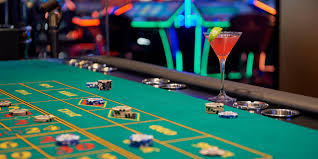CBD (Cannabidiol) has gained significant attention for its potential health benefits and therapeutic properties. As more people explore the world of CBD, understanding the terminology associated with CBD flowers becomes crucial. This glossary provides a comprehensive overview of key terms related to CBD flowers, helping both newcomers and seasoned users navigate this burgeoning field.
1. CBD Flower
CBD flower refers to the raw, unprocessed buds of the hemp plant that are rich in cannabidiol (CBD). Unlike THC, which is known for its psychoactive effects, CBD does not produce a “high” and is used for its potential therapeutic benefits.
2. Cannabidiol (CBD)
Cannabidiol is a non-psychoactive compound found in cannabis plants. It is one of over 100 cannabinoids and is primarily known for its potential health benefits, such as reducing anxiety, alleviating pain, and improving sleep.
3. Cannabinoids
Cannabinoids are a diverse group of chemical compounds found in cannabis plants. They interact with the body’s endocannabinoid system to produce various effects. Common cannabinoids include CBD, THC (tetrahydrocannabinol), and CBG (cannabigerol).
4. Terpenes
Terpenes are aromatic compounds found in many plants, including cannabis. They contribute to the flavor and scent of the CBD flower and may also influence its effects. Common terpenes include myrcene, limonene, and pinene.
5. THC (Tetrahydrocannabinol)
THC is the primary psychoactive compound in cannabis that produces the sensation of being “high.” In CBD flowers, THC levels are typically very low (below 0.3% by law), ensuring that CBD flowers do not produce psychoactive effects.
6. Hemp
Hemp is a variety of the Cannabis sativa plant species that is cultivated specifically for industrial and commercial use. It has low levels of THC and high levels of CBD, making it ideal for producing CBD flowers and other hemp-derived products.
7. Full-Spectrum CBD
Full-spectrum CBD products contain a wide range of cannabinoids, terpenes, and other compounds found in the hemp plant. This includes trace amounts of THC (less than 0.3%), which can contribute to the “entourage effect,” where the compounds work synergistically to enhance the overall therapeutic effect.
8. Broad-Spectrum CBD
Broad-spectrum CBD products contain multiple cannabinoids and terpenes but have had the THC removed. This provides a similar therapeutic effect to full-spectrum CBD while eliminating any risk of THC-related psychoactive effects.
9. Isolate
CBD isolate is the purest form of CBD, containing 99% cannabidiol and no other cannabinoids or terpenes. It is often used in products where a high concentration of CBD is desired without any trace of THC.
10. Entourage Effect
The entourage effect refers to the theory that cannabinoids, terpenes, and other compounds in the hemp plant work together synergistically to enhance the overall therapeutic effects of CBD. This concept supports the use of full-spectrum and broad-spectrum CBD products over isolates.
11. Decarboxylation
Decarboxylation is a chemical reaction that converts inactive cannabinoids into their active forms. For example, it transforms CBDA (cannabidiolic acid) into CBD. This process typically involves heating the CBD flower, which activates its beneficial compounds.
12. Curing
Curing is the process of drying and aging CBD flowers after harvesting to enhance their flavor, potency, and overall quality. Proper curing involves maintaining specific temperature and humidity levels to prevent mold and preserve the flower’s cannabinoid and terpene content.
13. Trichomes
Trichomes are small, glandular structures on the surface of cannabis flowers that produce and contain cannabinoids and terpenes. They appear as tiny, crystalline structures and are crucial for determining the potency and quality of the CBD flower.
14. CBD Rich vs. THC Rich
CBD-rich strains of cannabis are bred to have high levels of cannabidiol and low levels of THC. Conversely, THC-rich strains have high levels of THC and lower levels of CBD. The balance of these cannabinoids influences the therapeutic effects and psychoactivity of the flower.
15. Lab Testing
Lab testing refers to the analysis of CBD flower by a third-party laboratory to determine its cannabinoid profile, potency, and the presence of contaminants like pesticides or heavy metals. Reputable CBD products often come with a Certificate of Analysis (COA) from such testing.
16. Legal THC Limit
In many regions, including the United States, hemp-derived CBD flowers must contain less than 0.3% THC to be legally sold and used. This limit ensures that the CBD products do not have psychoactive effects and comply with legal standards.
17. Bioavailability
Bioavailability refers to the degree and rate at which CBD Flower UK is absorbed into the bloodstream and becomes available for use by the body. Factors influencing bioavailability include the method of consumption and the presence of other compounds.
Understanding these terms can help consumers make informed choices about CBD products and better appreciate the nuances of CBD flowers. Whether you’re new to CBD or looking to deepen your knowledge, this glossary serves as a useful resource for navigating the world of cannabidiol.

